by Pauline Hammerbeck
When you work in packaging, you have a hand in shaping consumers’ lives. In just the last 10 years, new technologies and innovative designs in the industry have made their lives noticeably better. Granted, we’re not talking “polio vaccine” here, rather, package designs and formats that offer good solutions to everyday, universal problems.
This decade has seen brands turn out packages that make life easier, safer, tastier and, yes, more indulgent. Here, our picks (in chronological order) for the 10 that made the biggest consumer impact in the decade that was.

The Plastic Beer Bottle
It’s lightweight. It chills quickly, and stays colder than beer in aluminum cans. It has a resealable screw cap. And, because it doesn’t shatter, it offers beer access in venues where glass packaging is frequently banned. Special oxygen-barrier properties are also said to result in a taste that’s as fresh as beer from glass bottles. Miller Brewing Company became the first brewer to nationally provide plastic bottles with its St. Patrick’s Day 2000 rollout of Miller Lite, Miller Genuine Draft and Icehouse bottles in PET. The launch offered beer drinkers the same flexibility and convenience they enjoyed for years from sodas and other beverages in plastic bottles, making resealable, quick chill, unbreakable beer packaging an option not just for sporting and music venues, but also for tailgates, backyard barbecues, the beach and, of course, the pool.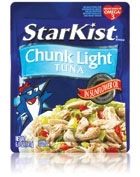
Tuna “Cans” the Can
StarKist tuna backed its move from a can to an easy-open tear pouch with a $20 million marketing campaign. The format was touted for shorter cooking and processing times, which resulted in firmer, fresher tasting tuna with a flaky appearance that stood in stark contrast to the “hockey puck” slab of fish that typically came out of a can. And, unlike canned tuna, pouches require virtually no liquid, sparing consumers the messy task of draining. StarKist’s success, and the enhanced “billboard” and graphic possibilities of the larger, flexible format, reinvented the look of the grocery aisles, driving a surge in food brands trying pouches out for the first time.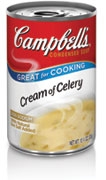
Easy-Open Soup
Buh-bye can opener. When the Campbell Soup Company unveiled pull-top lids for its 70 ready-to-serve soup varieties, it threatened to relegate the can opener as a relic. To put it in context, the company’s three biggest sellers were, at the time, among the top five shelf-stable food items purchased in U.S. grocery stores. The company says the introduction of the easy-open lid was the result of research that found almost half of consumers stated convenience as the number one driver of their purchase decisions. It also marked the beginning of a huge company effort to reinvigorate its soup business with packaging innovations like the microwavable Soup at Hand line and a gravity-fed in-store shelving system that made the company’s portfolio easier to shop.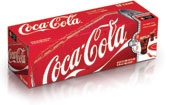
The Fridge Pack
Remember shuffling through the contents of your refrigerator for a cold can of pop? It’s a problem that found a solution in 2001 with Coca-Cola’s fridge pack: A long, thin carton that replaced the old “suitcase” style multi-packs. The insight behind the innovation is credited to Alcoa, which used ethnographic research to understand that consumers were just popping three or four cans into the fridge and finding another spot to store the bulky “suitcase” style carton. Realizing people didn’t replace the cans as quickly as they consumed them, the team turned out the longer, thinner fridge pack to house 12 cans inside a standard fridge. The carton features a perforated snap-off top that uses gravity to feed each successive can-creating a mini vending machine of sorts inside the fridge. Today, all of Coca-Cola’s core and developing brands use the format, and the company says the fridge pack continues to be its “core future consumption package.”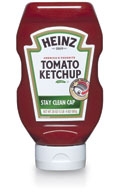
Upside Down Ketchup*
Heinz had always extolled the virtues of ketchup so thick, consumers had to wait before enjoying it (cue Carly Simon’s Anticipation). But the company decided that instant gratification was in order when it introduced an upside-down squeezable container that offered consumers quicker, easier and neater access to the product. The ergonomically designed, clear PET bottle features a silicone valve that cuts off flow of the ketchup until the consumer squeezes the bottle, eliminating the dried ketchup that often accumulated on caps. And, because it stands on its head, the format minimizes the runny liquid that’s common in upright bottles. (*Hunts released a similar package concept on the same day as the 2002 Heinz launch.)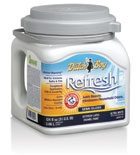
A Better Paint Can
For years, the only thing worse than watching paint dry was trying to pry open the can, avoiding a big spill while pouring or closing the container without leaving a dried, cakey mess under the lid. Dutch Boy’s all-plastic gallon changed that, with an easy twist-off lid, a molded side handle and a neat pour spout. The new container eliminated the need for screwdrivers or other tools to open the can, and provided a tight seal that worked to extend the shelf life of unused paint (quick, how many half-empty gallons are in your basement?). The structure also won consumers over for the stackability of the new design, and the fact that it resists denting and doesn’t rust.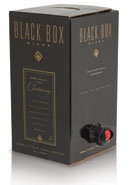
High-end Wine in a Box
Boxed wine seeped into public consciousness in the 80s, but barely drinkable blush wines were all that you’d find in the format. The package was popular, to some degree, because it was lightweight, portable and, best of all, unbreakable. But it took a vintage-dated offering to earn the category respect. In 2003, Black Box became the first U.S. vintner to offer super-premium appellation-specific vintage-dated boxed wines from the world’s premier growing regions. That’s wine speak for really high-end wine. The idea of getting premium wine in a format that kept fresh for up to four weeks after opening was enough to win some skeptics over. Others were sold on the idea of enjoying good quality wine on the go. Then there were the holdouts, who took to the format only because it offered four bottles worth for the cost of three (a good selling point these days as well). Today, the category is getting newfound respect-because it requires less energy to produce and transport than traditional wine packaging-as an eco-friendly option.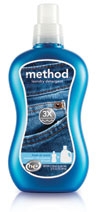
Lightweight Laundry
Method pioneered the concept of compact laundry detergent containers when it introduced a triple-concentrated formula in a small, lightweight bottle in 2004. The downsized bottle reduced the product’s carbon footprint, fitting more bottles onto a single truck for transport and requiring less material to produce. It was also simply much easier to handle and use. Big laundry soon followed suit and, today, you’d be hard pressed to walk the laundry aisle and find any sign of those hefty jugs -what environmental advocates called the SUV of consumer products. Method’s innovation also exposed the industry’s “dirty little secret” that conventional laundry caps are difficult to read, encouraging overdosing and, as it turns out, frequent repeat purchases. Earlier this year, the company one-upped its own innovation with an 8x-concentrated formula in packaging that dispenses by pump and requires 40 percent less plastic to produce.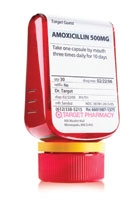
Rx Bottle Designed for Safety
Target reinvented conventional prescription bottles with a strong dose of common sense. The retailer’s ClearRx packaging addressed the chief problem of traditional medicine vials: cluttered, often unintelligible labels that made medications difficult to identify and correctly use. A single, wraparound label allows for larger print on the ClearRx bottle, which features a flat front to make the important information accessible at a glance. Transparent red plastic puts the pills on view and offers an important visual refill reminder. An extra layer of safety comes in the form of silicone rings on the neck of the bottle, which are personalized by color so individual family members can safely identify their own meds.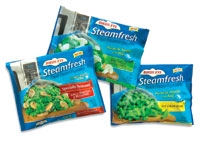
Steam-in-the-bag Vegetables
Birds Eye Foods is credited for inventing the flash-freezing method that introduced consumers to frozen foods more than 75 years ago. And, in 2006, it created a new, no-prep method for frozen vegetables with its Steam Fresh line, packaged in freezer-to-microwave flexible pouches that steam the veggies right in the bag. The flexible pouch puffs up under the pressure created by cooking and features built-in channels that direct the steam evenly throughout the bag. The launch heralded in steam-in-bag cooking to the United States, a convenience that has since become, like most conveniences, commonplace.Pauline is BRANDPACKAGING’s editor in chief. Reach her at hammerbeckp@bnpmedia.com or on Twitter at twitter.com/phammerbeck.
